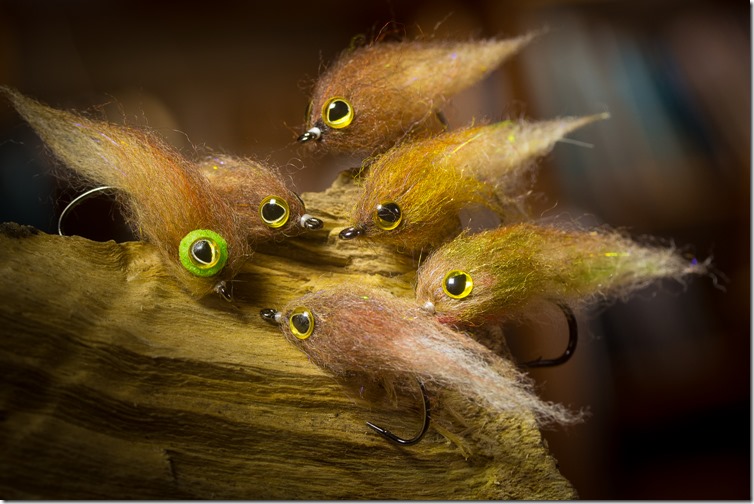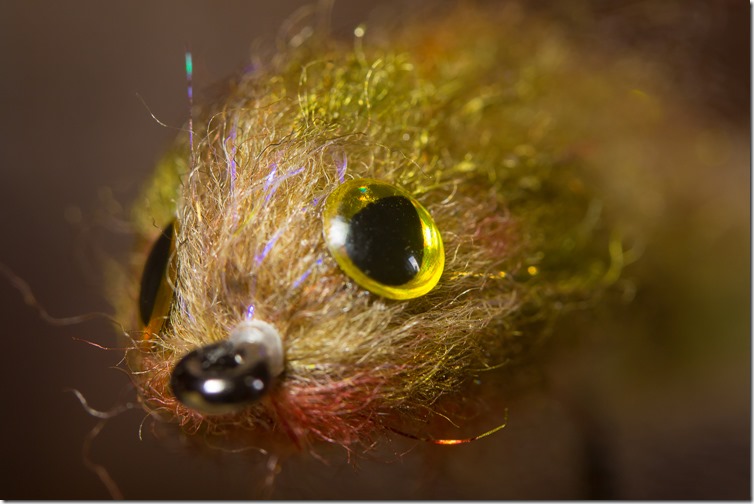Sometimes finding the right fly isn’t enough to close the deal – presentation is often more important.
Last night I was doing a saltwater fly tying demo, when a guy asked me: What is the best hook for a small sculpin imitation for sea trout?
Well that depends. The trout’s behaviour is affected by the season, temperature, light, wind and a lot of other conditions. You will have to adapt in order to find the fish and to get the presentation right. And actually your choice of hook can help you get it right. Let’s take an example.
Same same… but different
I’m filling out gaps in my saltwater fly boxes at the moment, and my number one go-to fly is a pretty simple Woolhead Sculpin. I tie this in a variety of colours, to match different local species of prey – and I even throw a couple of hot pink, orange and chartreuse versions in as well for those days, when provocation beats imitation.
During winter and early spring I most often fish a tan-rusty-olive-brownish variant, since it matches the sculpins that stays near the shores even in cold weather conditions.
In early spring the air can feel warm, but the water can still be cold, and trout, being ectothermic creatures, are less active than they will be later in the season. That means you have to retrieve your fly slow… and in the depth where fish are holding.
Choosing the right line brings you in the ballpark, but actually I found it really important to have flies with different sinking rates as well.
I fish a lot for sea trout in depths from just enough water to cover the back of a sea trout and up to 3 or 4 feet. That means floating- or slow sinking intermediate lines. I prefer the latter. With a line hovering in mid water, I can let the weight of the fly decide my fishing depth and speed.
To vary the weight of the fly – I tie the same pattern on several hook types. I’m not a big fan of wrapping wire around the hook shank, since I feel it makes the fly clumsy and interfere with the balance. So I prefer to use hooks of different wire thickness.
Right now I’m tying my trusty tan/brown Woolhead Sculpin on Ahrex NS110 for a standard weight, NS115 for deeper work and NS122 for a nearly weightless intermediate hovering fly. For fishing high in the water column – and for working the bottom with an ultra slow retrieve I make a bunch with Booby Eyes on the NS122 as well. And occasionally I add dumbbell to this pattern as well, when I need a rock knocking upside-down fly.
This setup gives me a bunch of options for presenting my favourite fly in different depths and retrieves – while spending more time fishing… than changing lines.
What’s the point?
Well point is, years ago you had to pay much more attention to wire thickness, strength and sharpness when choosing a hook for most kind of fishing. If you chose a heavywire hook for strength and weight, the point probably wasn’t super sharp, and setting the hook on a trout of 2 to 4 pounds could prove a challenge on a 6-weight rod. If you chose a lightwire hook for a super lively fly that could be fished ultra slowly… well… you would be worried, if a large trout actually grabbed it. Would it hold up to a beating?
I’m not saying, that you should go specimen hunting for monster trout on a small size NS122, but large trout are caught on a regular basis on small dry flies and nymphs using ultra small and thin wire hooks.
And hook technology has come a long way. Even a light wire hook has lot of strength and heavy wire hooks sport a sharp point. Furthermore, modern hooks have a smoother finish and penetrate easier. So… there is a lot to gain, by rethinking your hook preferences.
When you feel confident, that you’ve chosen the right pattern – you might just need to experiment with your presentation: meaning depth and retrieve speed and rhythm and choosing the right hook is a good start.
Check out my tying SBS on the Woolhead Sculpin V2 right here….
Have a nice weekend :0)
Michael


